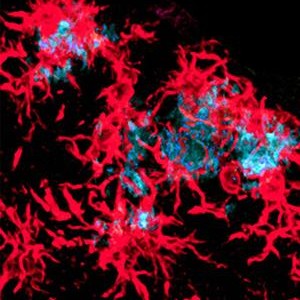Myelin Damage Caused by MS Could be Slowed, Prevented by Protein
Written by |

A new study has shown that a protein called TREM2 may inhibit microglial repair of damaged myelin in multiple sclerosis. The study appeared in the Jan. 29 issue of Acta Neuropathologica.
MS is characterized by the degeneration of myelin, a fatty coating that insulates nerve cells and helps them transmit impulses. When myelin is damaged, this inhibits communication in the nervous system, causing problems with movement, sensation, cognition, balance and pain. Damaged myelin also needs to be cleaned up by specialized brain cells called microglia. Failure to clean up the mess could worsen the complications that occur in MS.
In this study, the team found that mice lacking TREM2 did not have microglial clean up following experimentally-induced myelin damage. TREM2 is found on microglial cells and controls the clean-up response to damage, known as phagocytosis. In this experimental setup, the damage was induced by giving mice cuprizone, which results in a loss of myelin and mimics the damage seen in MS.
“We’ve been very interested in identifying ways to control naturally occurring mechanisms that help clean and repair the brain, and these new studies provide clear evidence that TREM2 could be just such a target,” said Laura Piccio, MD, PhD assistant professor of neurology and senior author.
The researchers are interested in determining how to activate the protein to slow or prevent damage caused by neurological disorders.
Other research studies have reported that forms of the TREM2 gene are associated with early-onset dementia and increased risk of Alzheimer’s disease, Parkinson’s disease and amyotrophic lateral sclerosis (ALS).
[adrotate group=”4″]
“When we give normal mice this chemical, they can clear most of the myelin fragments from the brain,” Piccio said. “But when we gave cuprizone to mice that did not have the gene and looked at their brains four, six and 12 weeks later, we could still see evidence of damaged myelin.”
Movement was significantly more impaired after cuprizone exposure in the mice lacking TREM2, which could be caused by the extra damage to brain cells caused by the continued presence of damaged myelin in the brain.
Marco Colonna, a researcher of a separate study that focused on the role of TREM in clearing myelin in Alzheimer’s disease, stated. “This is a mechanism that is very common in immune cells,” he explained. “When a signal activates immune cells and they start attacking an invader or working to repair an injury, they start using energy very rapidly. If the cells do not receive a second signal confirming the need for their services, this increased energy usage will kill them.”






